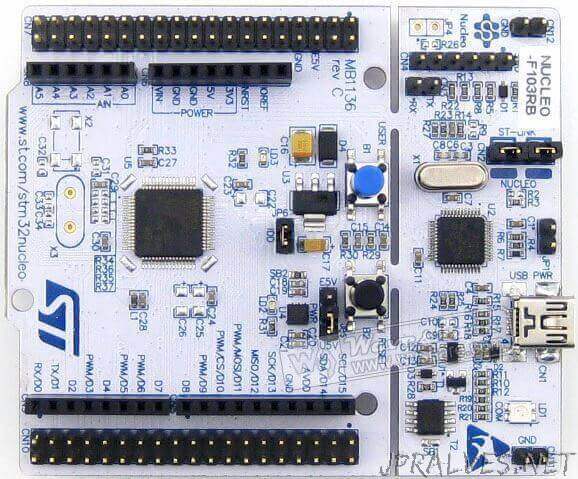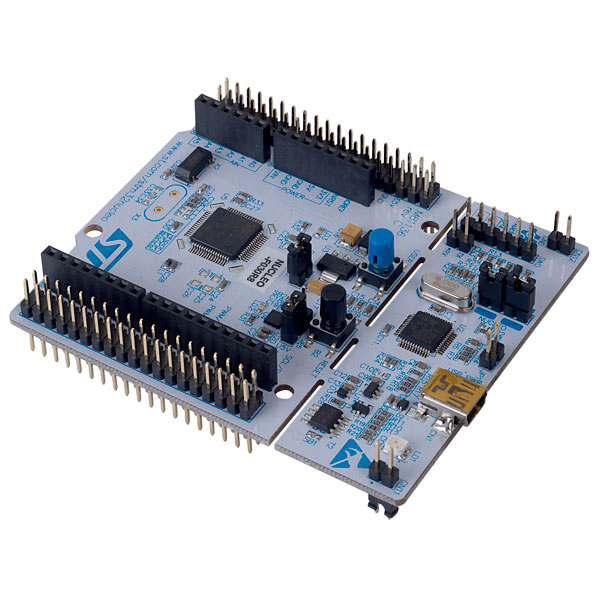

Solder jumpers SB12, SB13, SB14, and SB15 are used to connect the ST-Link to the rest of the board. But if you leave the ST-Link attached to the rest of the board you must make some changes to make it work for external use – here is the underside of the ST-Link: Warning – Without external hook-up, you can still use the ST-Link as programmer for the attached Nucleo. Why this layout? Because pins 2.7 match the programming header on a HY-TinySTM103T. N/C (solder jumper can be closed to connect to SWO)īy cutting one or more traces inside the solder jumpers, you can rearrange these at will.There’s a footprint for an 8-pin header on the left with the following top-to-bottom layout: Note that these pins are not all on a 0.1″ grid, so you can’t hack a bit of prototype board onto the ST-Link without bending its pins a bit. This board is set up to fit on the above ST-Link headers, and can be soldered directly to the pins to create a permanent setup. Here’s a little PCB for it (a prototype production run is on its way): The programming header pins are, top-to-bottom: The main pins are the ST-Link “SWD header” (CN4) and those marked TX and RX (CN3). The pins on the top left and right are only used as spacers. What we’re after, is to re-use the ST-Link for our own external boards. These connect the ST-Link to the board it’s attached to. The first thing to do is remove those two jumpers. You could saw the bottom part off (can’t break it easily, unfortunately). That’s why any Nucleo board will do here. It’s a great way to get started, because they include a built-in “ST-Link V2.1” programmer:Īctually, the programmer is the only part we’re interested in here. Now select the COM port to which your Nucleo board is connected.The Nucleo boards by STMicroelectronics cover a fascinating range of STM ♜’s, and are provided for non-commercial use at very low cost. This is mentioned as LD2 on the Nucleo board and it is connected with the PA5 pin of F103RB.
#Stm nucleo code
The above code blinks an onboard LED of Nucleo-F103RB after every one second. the loop function runs over and over again foreverĭigitalWrite(LED_BUILTIN, HIGH) // turn the LED on (HIGH is the voltage level)ĭigitalWrite(LED_BUILTIN, LOW) // turn the LED off by making the voltage LOW initialize digital pin LED_BUILTIN as an output. the setup function runs once when you press reset or power the board This example code is in the public domain. Model, check the Technical Specs of your board at: If you want to know what pin the on-board LED is connected to on your Arduino The correct LED pin independent of which board is used. It is attached to digital pin 13, on MKR1000 on pin 6. Most Arduinos have an on-board LED you can control. Turns an LED on for one second, then off for one second, repeatedly. Open IDE and click on Files –> preferences: The board support package manager allows you to add additional boards into Arduino IDE.
#Stm nucleo install
Download and install Arduino IDE for your operating systems such as Windows, Linux, and MAC, Adding Board Support PackageĪfter installing Arduino IDE, we need to add a board support package of STM32 Arduino core in Arduino IDE.
#Stm nucleo how to
Installing STM32 Core in Arduino IDEĪfter having a brief introduction of STM32 Nucleo boards and STM32 Arduino core, let’s see how to install STM32 library in Arduino IDE.įirst of all, you should make sure, you have Arduino IDE installed on your system. You can get more information about the STM32 Arduino core from this repository. That means we can use the same Arduino APIs to use STM boards. Most importantly, the STM32 Core official team has ported all Nucleo and other STM32 boards into Arduino IDE.

Secondly, if you are already familiar with Arduino and used it to program Arduino boards, you can easily apply that experience to program STM32 boards also. The main reason to use Arduino to program STM32 boards is due to the simplicity and ease of use of Arduino IDE to program various boards.

Why Use Arduino to Program STM32 Nucleo Boards?
#Stm nucleo series
But we will be using the Arduino framework in this series of tutorials. There are different programming environments are available to program Nucleo boards such as Arduino, STM32Cube, Mbed, Zephyr RTOS, etc.


 0 kommentar(er)
0 kommentar(er)
